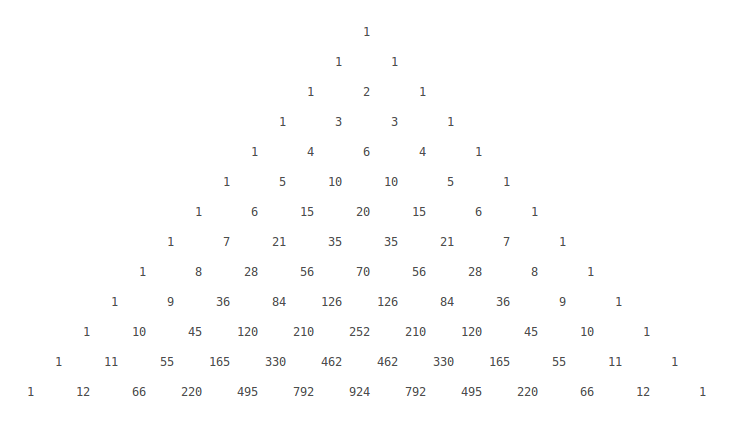What is real part in #(i-sqrt(3))^13#?
1 Answer
Explanation:
Here are a couple of methods...
Method 1
Use de Moivre's theorem:
#(cos theta + i sin theta)^n = cos n theta + i sin n theta#
Note that:
#i - sqrt(3) = 2(-sqrt(3)/2+1/2i) = 2(cos((5pi)/6)+i sin((5pi)/6))#
So:
#(i-sqrt(3))^13 = 2^13(cos((5pi)/6)+i sin((5pi)/6))^13#
#color(white)((i-sqrt(3))^13) = 2^13(cos((65pi)/6)+i sin((65pi)/6))#
#color(white)((i-sqrt(3))^13) = 2^12 * 2(cos((5pi)/6)+i sin((5pi)/6))#
#color(white)((i-sqrt(3))^13) = 2^12 * (i - sqrt(3))#
#color(white)((i-sqrt(3))^13) = 4096(i - sqrt(3))#
#color(white)((i-sqrt(3))^13) = 4096i - 4096sqrt(3)#
So the real part is
Method 2
The binomial theorem tells us that:
#(a+b)^n = sum_(k=0)^n ((n),(k)) a^(n-k) b^k#
where
These binomial coefficients can be observed as the

In particular:
#(a+b)^3 = a^3+3a^2b+3ab^2+b^2#
So:
#(i - sqrt(3))^3 = i^3-3i^2sqrt(3)+3i(sqrt(3))^2-(sqrt(3))^3#
#color(white)((i - sqrt(3))^3) = -i+color(red)(cancel(color(black)(3sqrt(3))))+9i-color(red)(cancel(color(black)(3sqrt(3))))#
#color(white)((i - sqrt(3))^3) = -8i#
So:
#(i-sqrt(3))^12 = ((i-sqrt(3))^3)^4 = (8i)^4 = 8^4 i^4 = 4096#
So:
#(i-sqrt(3))^13 = (i-sqrt(3))^2 (i - sqrt(3)) = 4096(i-sqrt(3)) = 4096i - 4096sqrt(3)#

